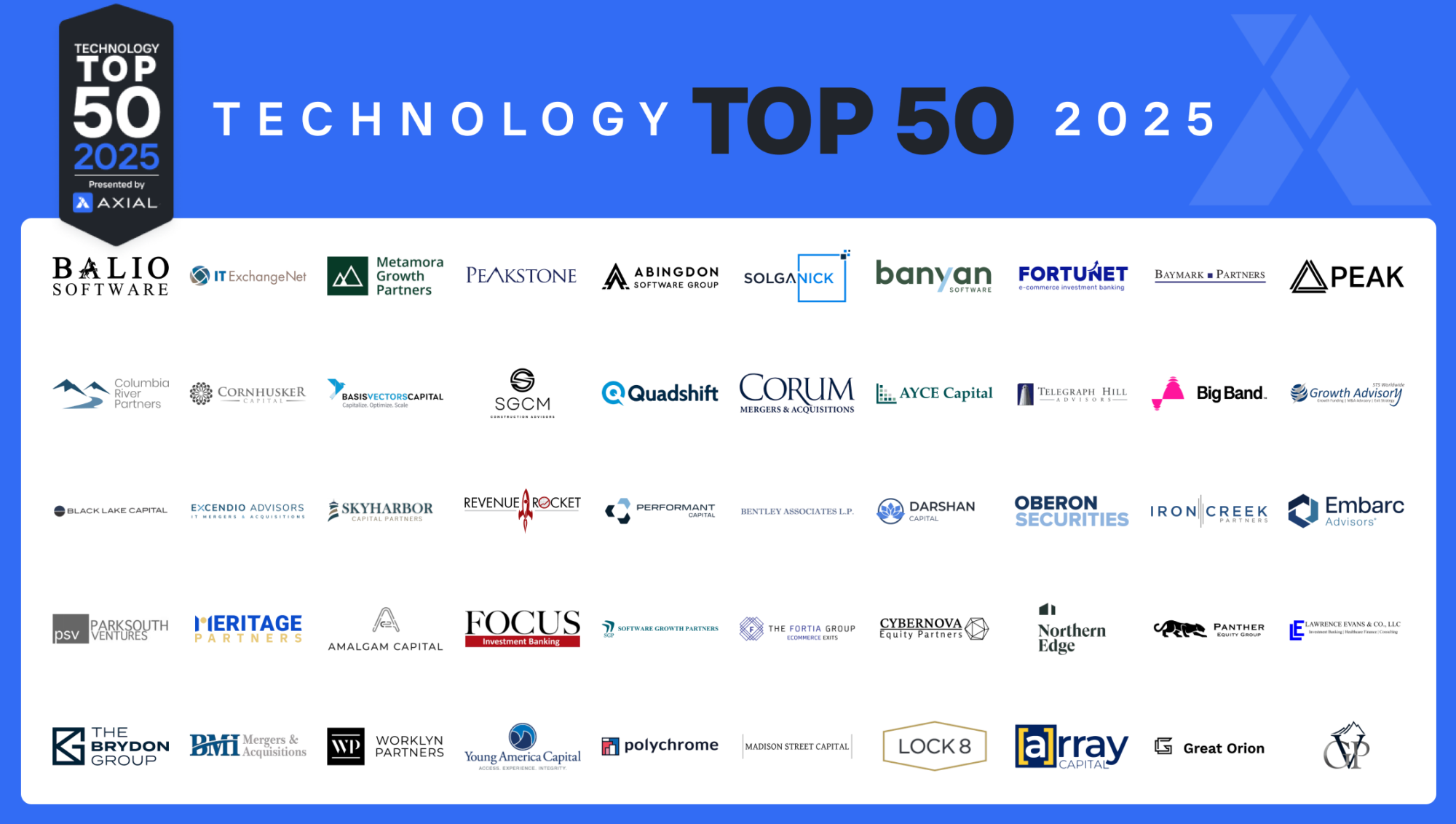
The Top 50 Lower Middle Market Technology Investors & M&A Advisors [2025]
Technology remains a steady presence in the lower middle market, representing ~13% of deals brought to market via Axial over…
Portfolio company add-ons are an increasingly popular component of growth acceleration and investment strategies among financial buyers. A recent report by Statista notes that the number of companies backed by private equity firms has more than doubled in the last ten years. Pitchbook projects that add-ons (also commonly referred to as sponsored add-ons or private equity-backed add-ons) will comprise 66% of buyout activity in 2017, a record high.
 As a mid-market investment banker, however, it can be especially hard to identify the real-time investment intent of portfolio companies. Few PE firms market the acquisitive nature of their portfolio companies. Data providers like PitchBook can’t cover 100% of the market (hence the name private equity). This, along with the growing diversity of buyer and investor types, makes it much harder to create a comprehensive buyer list when it comes time to bring a deal to market.
As a mid-market investment banker, however, it can be especially hard to identify the real-time investment intent of portfolio companies. Few PE firms market the acquisitive nature of their portfolio companies. Data providers like PitchBook can’t cover 100% of the market (hence the name private equity). This, along with the growing diversity of buyer and investor types, makes it much harder to create a comprehensive buyer list when it comes time to bring a deal to market.
We asked three investment bankers to tell us about how they identify acquisitive private equity-backed businesses, and what advice they give to sell-side owners during the transaction process.
 Jonathan Brabrand, The Fahrenheit Group:
Jonathan Brabrand, The Fahrenheit Group:
“In our experience, pursuing add-on acquisitions is a key growth strategy for most private equity firms. As we search for strategic buyers, we flag those that are owned by private equity and categorize them separately. Chances are good that the private equity firms behind those companies are looking for add-ons, and we know that they have experienced deal professionals and the capital necessary to acquire our client — ingredients often not present in privately-owned businesses.
“It’s important for us to understand how long the portfolio company has been owned by the private equity firm. Typically private equity buyers very aggressively pursue add-ons for the first two to three years of an investment, and then their interest starts to wane during the middle and late innings of their ownership period.”
 Christian Schiller, Cascadia Capital:
Christian Schiller, Cascadia Capital:
“We build custom buyer lists using Capital IQ and PitchBook, mainly to sort out which private equity firms have companies that may be interested in our clients as an add-on acquisition. Each of our industry bankers also stays very close to the core private equity firms that are focused on their industries, and as such are also aware of which companies those private equity firms are most aggressively seeking add-ons around.”
 Dexter Braff, The Braff Group:
Dexter Braff, The Braff Group:
“Since 2001, we have logged every platform transaction completed by a private equity group in the health care service sectors we cover. If the private equity sponsor is not already in our database as a potential follow-on buyer, we log it accordingly. Additionally, we scour industry publications and subscribe to PitchBook to uncover other potential investors. Finally, as specialists in the health care sectors we cover, we present at and attend numerous industry conferences, publish quarterly sector updates, and are extremely visible on the internet. Private equity firms find us when they are seeking add-on acquisitions.”
 Dexter Braff, The Braff Group:
Dexter Braff, The Braff Group:
“Roll-up strategies are particularly common in highly fragmented, healthcare services businesses. With the added scrutiny private equity brings to every transaction, and the fact that they may be entertaining many add-on opportunities at a given time, it can be particularly challenging to usher these deals to the finish line at the price and terms originally agreed upon. We emphasize how critical it is to work with many private equity firms and have fully vetted back-up proposals in hand in the event that an initial deal falls through. Not only does this give our clients real leverage throughout negotiations, it gives them the opportunity to pursue other options, as necessary, without undue delay, or worse yet, prevents them from having to start a process all over from the beginning.”
 Jonathan Brabrand, The Fahrenheit Group:
Jonathan Brabrand, The Fahrenheit Group:
“When our clients seek advice on selling to a private equity portfolio company, we encourage them to understand the buyer’s strategic direction and to get to know the top professionals at both the company and sponsor levels.
“In our most recent transaction, we sold an owner-operated private business to a private equity-backed company that was expanding aggressively via acquisition. After spending time with executives from the company and private equity firm during the management presentation phase of the process, our client learned that his line of business represented a new, complementary service offering to the acquirer’s core business. As such, our client would lead a new division within the organization and focus on growing his business both externally with new accounts and internally via cross-selling to the parent’s existing client base, thereby significantly expanding his growth potential. He also developed a high level of trust and respect for the leadership team from both the portfolio company and private equity firm, which provided an extra level of comfort in joining forces with them.”
 Christian Schiller, Cascadia Capital:
Christian Schiller, Cascadia Capital:
“Pre-close, we make sure that certain structural elements of the deal (i.e., earnout, seller note, equity in combined entity, etc.) are very clearly defined and there are not any ‘intermingling’ considerations that could adversely affect our client related to the PE’s core business. As the deal progresses, we always define the role for the CEO on a go-forward basis as part of the larger organization. That includes contracts, employment terms, salary/compensation, incentive programs, options package, etc. Since the business owner will be working together with the portfolio company, it’s very important to have alignment on the business plan.
“In addition to looking at the business’ overall performance, we evaluate how much leverage there is in the overall entity to ensure that our client is not selling into a train wreck. It’s also important to look at the private equity firm’s overall exit objectives and timing. We look at this because it’s not uncommon for the add-on acquisition to a key achievement for the private equity firm that can allow them to have real exit options.”
